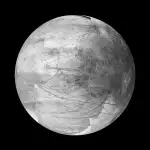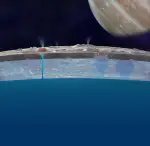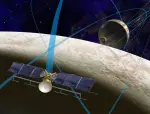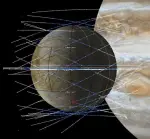On August 6, 2012, NASA’s control room was gripped by seven minutes of terror as the Curiosity Rover descended through the Martian atmosphere. In the midst of all the excitement, one young staffer sporting a star-spangled mohawk caught the attention of viewers and quickly became an Internet sensation. President Barack Obama even joked about getting a mohawk himself when he called to congratulate the team.
“Mohawk Guy” was Bobak Ferdowsi, a mission planner on Curiosity at NASA’s Jet Propulsion Lab. By the time Obama called, Ferdowsi had already sported a number of hairdos at NASA, each one a symbol of a milestone during his nine years of working towards Mars. “The landing of Curiosity was one of the most significant moments of my life,” he tells Fast Company. “I have never been so invested in one thing.”

Photo: Marlene Froehlich for Pioneers Festival
Now he’s got a new haircut–he was rocking a more low key mini-mohawk when I met him last month–to match a new role: mission planner on NASA’s latest journey, an unmanned jaunt to Jupiter’s moon Europa to see if its icy crust hides a saline ocean that could support life.
Ferdowsi’s own mission to space started with Star Trek. Ferdowsi’s mother is American, and his father is Iranian. “The 1980s was a tense time for those two countries,” he says. “I couldn’t visit my family in Iran. They couldn’t come to visit us. Star Trek represented this amazing idea that in the future, alien species that don’t get along will join together. Space exploration is a way for us to recognize that the Earth is really a small thing that we share, not a national thing, but a human thing.”
In his freshman year, Ferdowsi studied experimental physics. When he was 18, his lab reproduced a experiment that had earlier won a Nobel Prize. A charged ion, an atom that has lost most of its electrons, is placed within a magnetic field. When a laser is shone on the ion, it glows.
“The idea that I can see the glow from this one thing that is almost improbably small, that was a very powerful moment,” says Ferdowi. But he soon realized something else about the field. “Basically, we were tearing apart experiments in order to get better measurements. I couldn’t really get that excited about a decimal-place improvement in a measurement.” Moving that decimal place can take a decade.
“The idea that things took multiple years seemed crazy,” Ferdowsi says. “At the time, it felt like a large fraction of my life. I thought, maybe there’s more immediate gratification in engineering.” So he switched to studying aerospace engineering, and, ironically, he says, “I end up in a profession where everything takes a long time.”
Space exploration is a long-term business. Jupiter’s moon has been an intriguing scientific destination for decades, and especially since 1979, when NASA’s Voyager 1 and 2 spacecraft captured images of Europa on their tour of the outer solar system. But Jupiter is more than eight times as far from Earth as Mars is. Just getting there takes between two-and-a-half to seven years. Due to the cost and the distance, even if conditions for life are detected on Europa, it could be decades before a lander like Curiosity touches down on the surface. Astronauts could not work there safely without a very advanced form of shielding, a type that does not yet exist.
The Europa Clipper mission, which officially moved from the study to development stage on June 17, is the first step in exploring Europa. It is expected to launch around 2022, and after a few years’ journey to Jupiter, will fly by Europa multiple times to gather data. The objective is to discover whether Europa could support life–which, if it exists, might look very different to life on Earth.
Europa is the smallest of Jupiter’s moons at roughly a quarter of the size of Earth. It’s covered with a sheet of ice several miles thick, but in 2013, the Hubble Space Telescope detected water vapor over Europa’s south pole, the latest confirmation of the existence of a liquid ocean under its frozen crust. Its seafloor may have volcanoes or hydrothermal vents like its sister moon Io, supplying a source of energy. Europa’s thin atmosphere, whose compounds are created by Jupiter’s intense radiation, is oxygen-based. In other words, Europa could supply all the conditions necessary to the development of life as we know it.
That’s assuming that extraterrestrial life depends on the same conditions that we do. “We have learned that physics applies universally, that chemistry applies universally,” says Ferdowsi. “We don’t know yet whether biology is universal. Literally everything we understand about life comes from a single data point, which is Earth. I am not okay with that. I need more data.”
The Europa Clipper spacecraft will perform 45 flybys of the moon, each of which will gather data on its surface and seas. NASA originally studied sending a probe into orbit around Europa in a joint mission with the European Space Agency (ESA), but pulled out due to the projected cost of $5 billion: The high radiation environment that surrounds Europa means that an orbiting spacecraft would require expensive shielding. Instead, it will make safer, highly elliptical orbits around Jupiter to carry out its flybys of Europa. Its energy costs are relatively cheap too: Clipper will be powered by solar panels instead of more expensive and complicated nuclear power.

The mission, estimated to cost around $2 billion, is still in its early days. “At this stage, we are not solving the most complex problems,” says Ferdowsi. “We are dealing with the fundamentals. Each of those flybys will have a concept of, What are we going to look at? What does that mean for how we appoint the spacecraft? What does it mean for how much data we gather? We can start painting a picture–still broad strokes at this level–of what a day in the life of this spacecraft is really going to be.”
The Europa Clipper’s payload of scientific instruments, announced on May 26, is designed to work in conjunction to determine Europa’s potential to sustain life, rather than to detect life directly. That means measuring the depth and salinity of Europa’s ocean, the thickness of the ice shell, and the chemistry of its surface.
The Clipper’s cameras will produce high-resolution images of Europa’s surface and help determine its composition, while a mass spectrometer will analyze its atmosphere. An ice-penetrating radar will determine the thickness of the moon’s icy shell and search for subsurface lakes, while a magnetometer will use the strength and direction of the moon’s magnetic field to estimate the depth and salinity of its ocean. And a thermal instrument will scour Europa’s surface in search of plumes of warmer water. “Although if there are whales under the ice, that would be my favorite thing,” laughs Ferdowsi.
The operation of an orbital mission like Europa is quite different from a landing mission like Curiosity, whereby the data received from the rover each day determined plans for the next day. “In the early days of Curiosity, we lived on Mars time,” says Ferdowsi. “The nice thing about orbital stuff is that it is usually more routine.”
That doesn’t make the mission or his job easy: as mission planner, Ferdowsi is charged with optimizing the myriad trade-offs involved in any trip into space. “It’s an interesting job, because it involves synthesizing information across large chunks of the design, and that includes both spacecraft design and the whole ground system and how we operate.” As a result, Ferdowsi works closely with both the flight system team that designs the spacecraft, and the operations team, which manages the spacecraft’s activities on a daily and hourly basis.
Recently, for example, the team looked at a trade of engines. Do you put one big engine or lots of smaller engines on board? A single large engine is also a single point of failure, but having multiple small engines complicates the operation of the spacecraft. “It’s understanding choices that have been made in the flight system that impact operations and, conversely, how do we design a spacecraft that is easy to operate?”
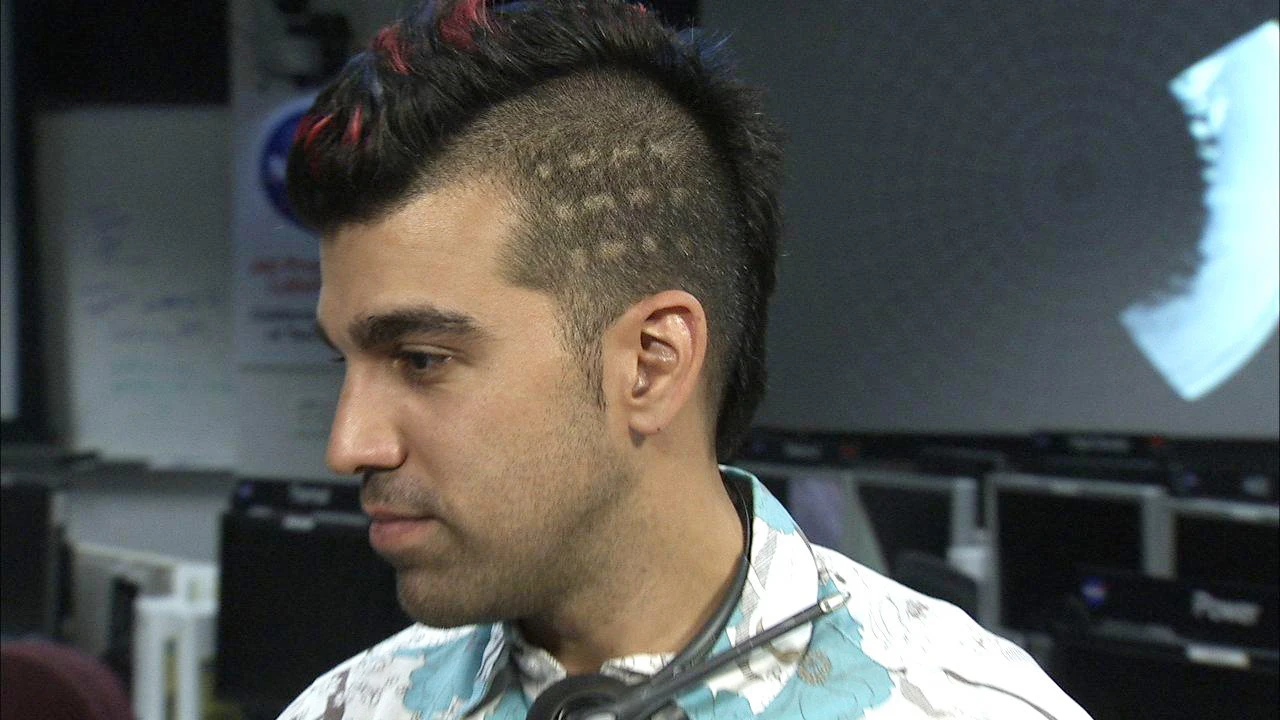
His work changes over the long lifetime of a mission. First there’s planning, then building, and finally testing the physical spacecraft, its software, and all the operations procedures, like running through launch scenarios or landing scenarios. The launch itself is followed by several years of travel through space.
I ask Ferdowsi how he deals with working on a single project for such an extended period, given his youthful aversion to long timelines. “It’s definitely not 10 years, and you get one moment,“ he says. “The haircut thing”–he sports a new look for each major mission milestone–“started because of that recognition that there are steps along the way, whether it was the first time that we got to test a scenario on the flight vehicle that was eventually going to go to Mars, or the first time that we did a rehearsal together of what the launch would look like. All of those things are pretty satisfying.”
Ferdowsi relishes each step along the way to Europa. “I don’t think I will ever get bored of this job. Every day, even when you fail, you get to learn something new,” he says. “I just want to feel, at the end of my life, that I have contributed something valuable to those missions.”
Recognize your brand’s excellence by applying to this year’s Brands That Matter Awards before the early-rate deadline, May 3.


